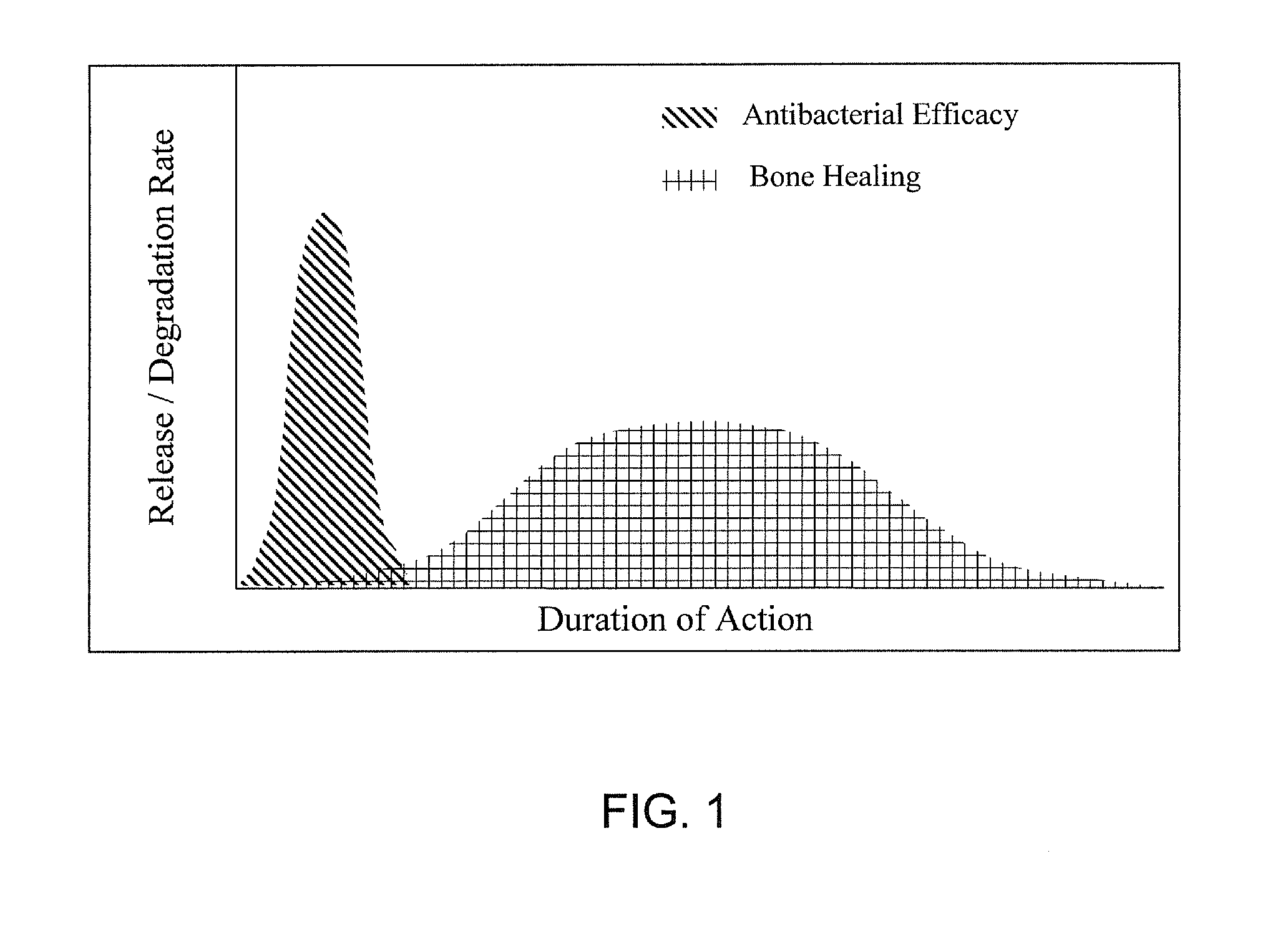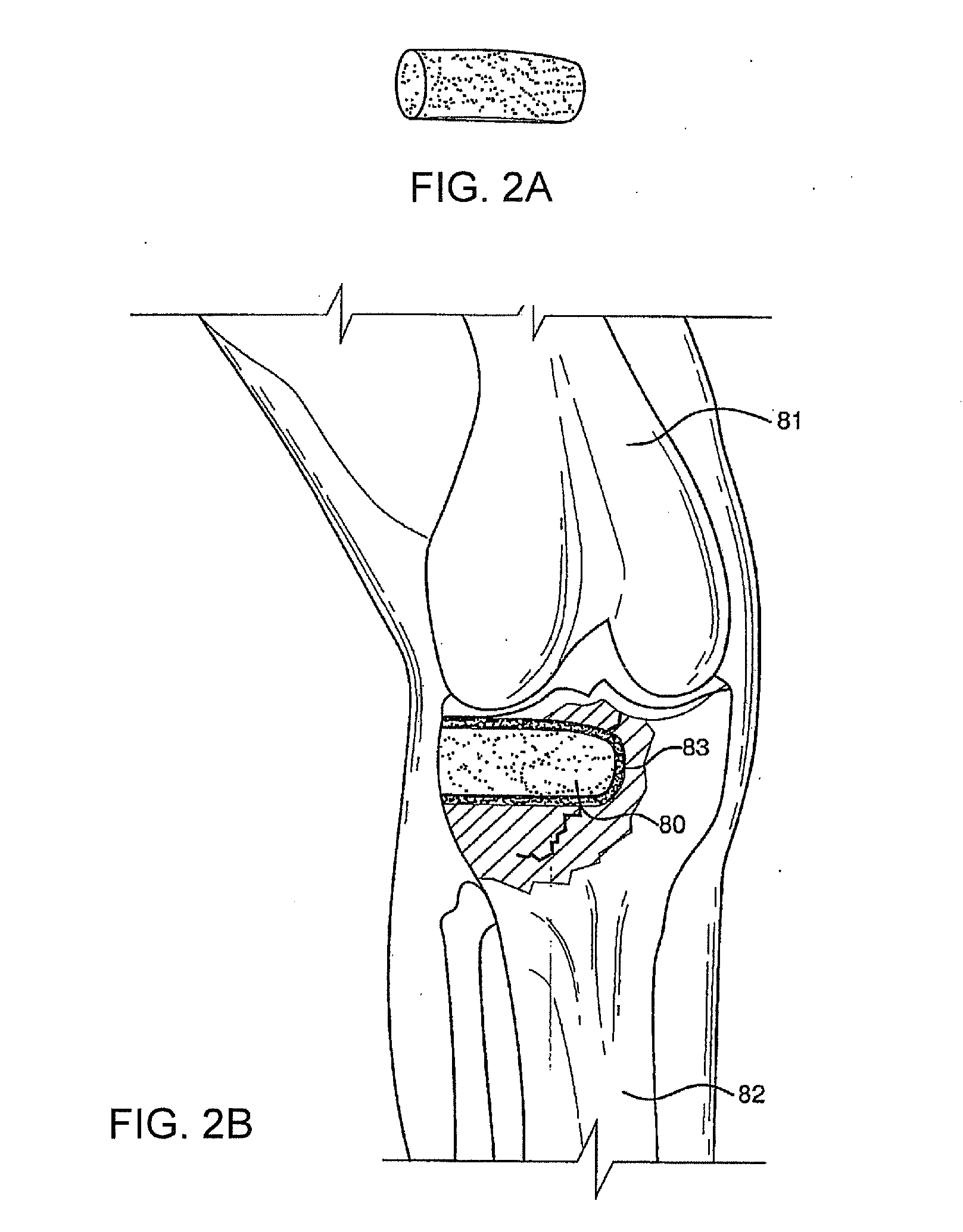Bioactive antibacterial bone graft materials
a bioactive and bone graft technology, applied in the field of bioactive antibacterial materials, can solve the problems of prolonging the recovery time of patients and presenting significant clinical problems in surgical site infections
- Summary
- Abstract
- Description
- Claims
- Application Information
AI Technical Summary
Problems solved by technology
Method used
Image
Examples
example 1
Scanning Electron Microscopy (SEM) Images of Several Embodiments of the Present Invention
[0085]Scanning electron microscopy (SEM) was performed to qualitatively evaluate the bimodal nature of the bioactive glass of the present invention in morsel form and as part of a composite. FIGS. 9A, 9B and 9C are representative SEM images of the present invention showing bimodal Combeite glass-ceramic particles <53 μm in size and from about 90 μm-150 μm in size at three different magnifications—×50 magnification (FIG. 9A), ×250 magnification (FIG. 9B) and at ×500 magnification (FIG. 9C). FIG. 10 is a representative SEM image of another embodiment of the present invention in composite form in which the bimodal Combeite glass-ceramic comprises about 20% by weight of the composite, the beta-tricalcium phosphate comprises about 65% by weight of the composite and collagen comprises about 15% by weight of the composite (×200 magnification).
example 2
Laser Scattering Particle Size Distribution Analyzer Evaluation
[0086]Particle size distribution of the bimodal glass of the present invention was performed using a laser scattering particle size distribution analyzer (Horiba LA-910). This analytical technique provides information on the D10 (particle size for which 10% of the particle size distribution is below this value), D50 (particle size for which 50% of the particle size distribution is below this value) and D90 (particle size for which 90% of the particle size distribution is below this value). Bimodal Combeite glass-ceramic particles (<53 μm in size and from about 90 μm-150 μm in size) were analyzed in triplicate. Approximately 50% of the particles, by weight, were below 53 microns in size while approximately 50% of the particles, by weight, were between 90-150 microns in size. An exemplary particle size distribution graph of the bimodal glass is shown in FIG. 11. The D10 of this particle size distribution was between about ...
example 3
In-Vitro Bioactivity
[0087]In vitro bioactivity studies were performed with the test materials of the present invention using the method of Kokubo, How useful is SBF in predicting in vivo bone bioactivity, Biomaterials (2006) 27:2907-2915. Samples were made by combining a strip of calcium phosphate and collagen (Vitoss® (VT) Foam Pack Bone Graft Substitute (Orthovita, Inc., Malvern, Pa.)) with bimodal Combeite bioactive glass-ceramic particles. Fifty percent (50%) by weight of the glass particles were about 13, 14 and 15, respectively). After immersion in SBF, the formation of a significant amount of calcium phosphate was observed on the composite material even as early as 1 day.
PUM
| Property | Measurement | Unit |
|---|---|---|
| Fraction | aaaaa | aaaaa |
| Fraction | aaaaa | aaaaa |
| Fraction | aaaaa | aaaaa |
Abstract
Description
Claims
Application Information
 Login to View More
Login to View More - R&D
- Intellectual Property
- Life Sciences
- Materials
- Tech Scout
- Unparalleled Data Quality
- Higher Quality Content
- 60% Fewer Hallucinations
Browse by: Latest US Patents, China's latest patents, Technical Efficacy Thesaurus, Application Domain, Technology Topic, Popular Technical Reports.
© 2025 PatSnap. All rights reserved.Legal|Privacy policy|Modern Slavery Act Transparency Statement|Sitemap|About US| Contact US: help@patsnap.com



